Bristol Britannia 313 on:
[Wikipedia]
[Google]
[Amazon]
The Bristol Type 175 Britannia is a retired British medium-to-long-range
 During April 1950, the airliner's name, ''Britannia'', was selected. The designation ''Britannia 101'' was applied to first pair of prototypes, which were powered by the early Proteus 625, the successor to the 600 series engine that had already completed type trials.
The first prototype, registered ''G-ALBO'', with Bristol Chief Test Pilot A.J. "Bill" Pegg at the controls, first flew on 16 August 1952 at Filton Aerodrome.Carvell 2005, p. 67. During the maiden flight, the over-sensitive flying controls led to wild pitching before Pegg restored control. During the landing approach, smoke filled the cockpit and the main undercarriage bogie temporarily stuck, only fully deploying seconds before landing. The snags were resolved and by September, the prototype was cleared to perform at the 1952 SBAC Display at
During April 1950, the airliner's name, ''Britannia'', was selected. The designation ''Britannia 101'' was applied to first pair of prototypes, which were powered by the early Proteus 625, the successor to the 600 series engine that had already completed type trials.
The first prototype, registered ''G-ALBO'', with Bristol Chief Test Pilot A.J. "Bill" Pegg at the controls, first flew on 16 August 1952 at Filton Aerodrome.Carvell 2005, p. 67. During the maiden flight, the over-sensitive flying controls led to wild pitching before Pegg restored control. During the landing approach, smoke filled the cockpit and the main undercarriage bogie temporarily stuck, only fully deploying seconds before landing. The snags were resolved and by September, the prototype was cleared to perform at the 1952 SBAC Display at
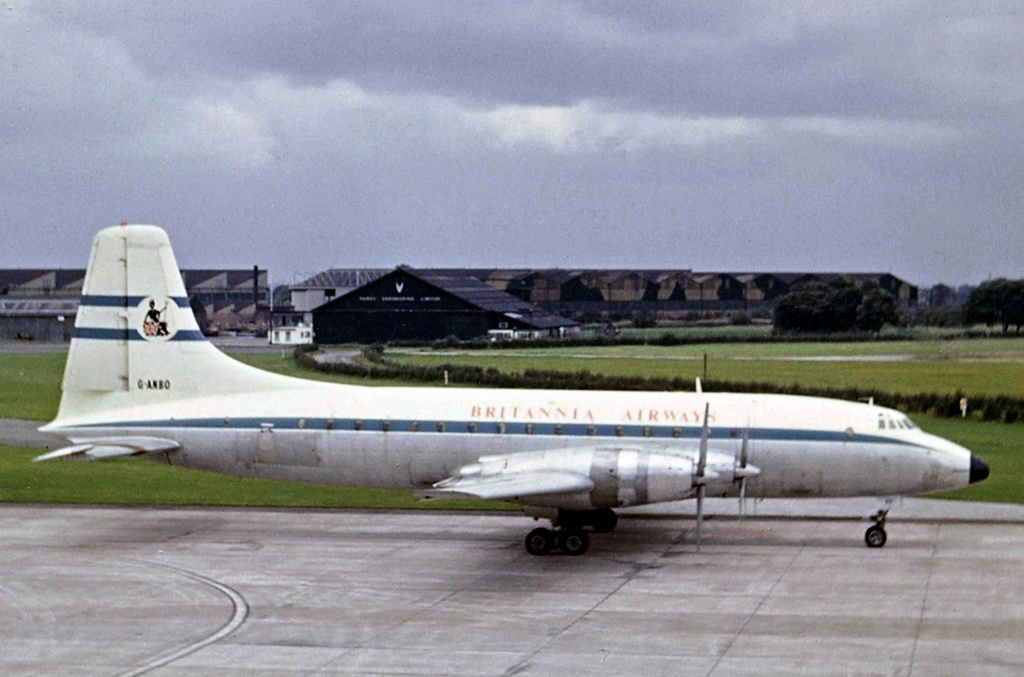 The first prototype ''G-ALBO'' was modified to more closely approximate a production standard, but was retained by the company to undergo engine testing and development.Carvell 2005, p. 71. Bristol revised the design into a larger transatlantic airliner for BOAC, resulting in the Series 200 and 300; the Britannia 300LR (Long-Range) was viewed as being "eminently suitable" for BOAC's services between London and Sydney. The purchase price for each Britannia 100-series aircraft was agreed by BOAC in 1955 at £768,000.
The first prototype ''G-ALBO'' was modified to more closely approximate a production standard, but was retained by the company to undergo engine testing and development.Carvell 2005, p. 71. Bristol revised the design into a larger transatlantic airliner for BOAC, resulting in the Series 200 and 300; the Britannia 300LR (Long-Range) was viewed as being "eminently suitable" for BOAC's services between London and Sydney. The purchase price for each Britannia 100-series aircraft was agreed by BOAC in 1955 at £768,000.
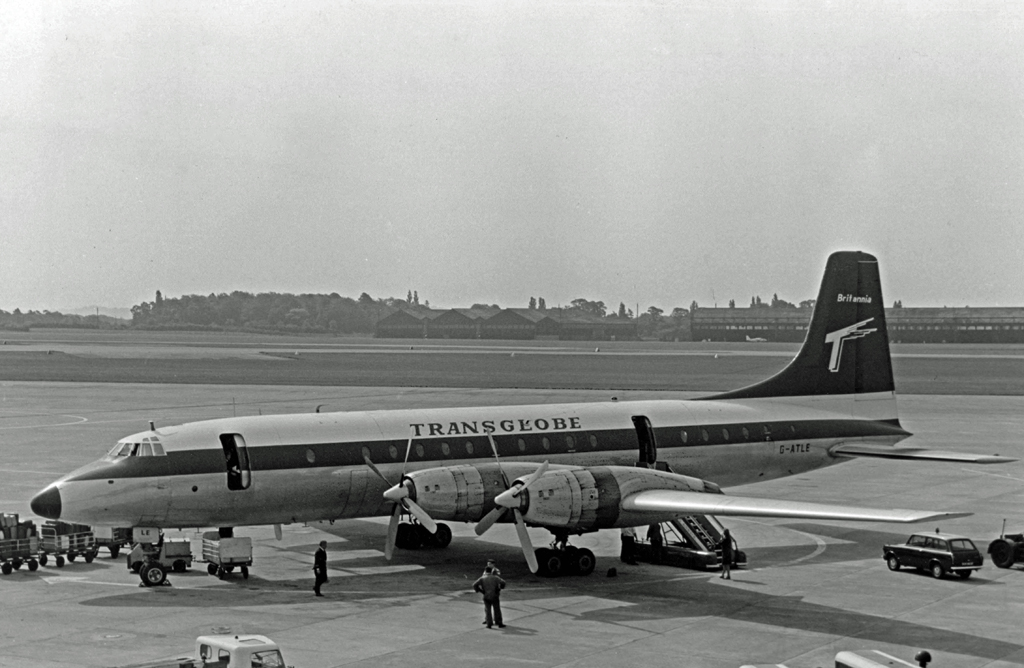 In 1954, a licence was issued to
In 1954, a licence was issued to
 Following a long period of uneventful development flying trials and the fitting of a modified Proteus 765 series engine that greatly reduced breakdowns, a full Certificate of Airworthiness was awarded at the end of 1955. The first two Model 102s were delivered to BOAC on 30 December 1955 for crew training.Jackson 1974, p. 265. The Model 102 began scheduled service on 1 February 1957 with a BOAC flight from London to Johannesburg, flights to Sydney following in March and to Tokyo in July. By August 1957, the first 15 Model 102 aircraft had been delivered to BOAC.Barnes 1964, p. 347. The last 10 aircraft of the order were built as Series 300 aircraft for transatlantic flights.
In April 1959, a Model 102 Britannia was leased by BOAC to Ghana Airways for flights between
Following a long period of uneventful development flying trials and the fitting of a modified Proteus 765 series engine that greatly reduced breakdowns, a full Certificate of Airworthiness was awarded at the end of 1955. The first two Model 102s were delivered to BOAC on 30 December 1955 for crew training.Jackson 1974, p. 265. The Model 102 began scheduled service on 1 February 1957 with a BOAC flight from London to Johannesburg, flights to Sydney following in March and to Tokyo in July. By August 1957, the first 15 Model 102 aircraft had been delivered to BOAC.Barnes 1964, p. 347. The last 10 aircraft of the order were built as Series 300 aircraft for transatlantic flights.
In April 1959, a Model 102 Britannia was leased by BOAC to Ghana Airways for flights between 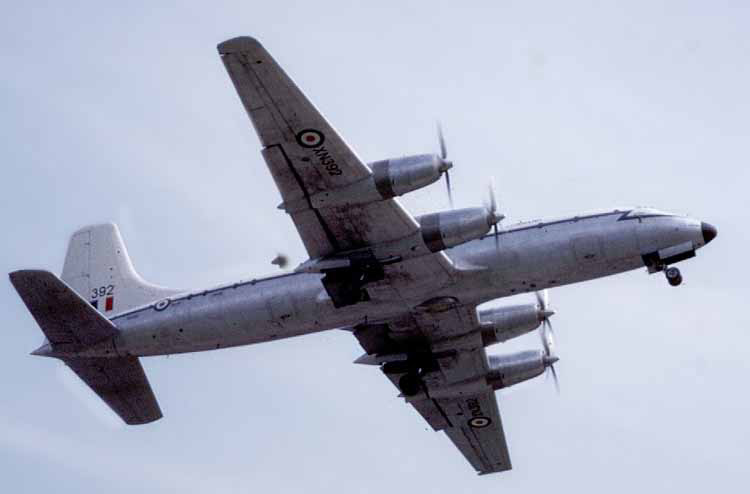 The next production series was based on the long-range, mixed passenger/freight Model 200 series that was intended for civil airline use, but ultimately Bristol offered the series to the Royal Air Force (RAF) instead. The production series of three Model 252 and 20 Model 253 aircraft were purchased by RAF Transport Command in 1959, assigned the designation ''Britannia C.2'' (first Model 252 series) and ''C.1'' (Model 253 series). Those in RAF service were allocated the names of stars, such as "Arcturus", "Sirius" and "Vega". On retirement from the RAF in 1975, many Model 200 series were subsequently used by independent civil operators for cargo operations, harkening back to their original intended role.
Although the Bristol Model 302 was built first as part of the original BOAC order, BOAC released this series to other airlines; '' Aeronaves de Mexico'' took two Model 302s, which entered service in December 1957. The 18 Bristol Britannia 312s for BOAC were delivered from September 1957 with its service introduction on the first-ever non-stop flight from London to Canada on 19 December 1957. In late December 1957, BOAC began regular Britannia flights from London to New York. Other airlines, such as Israel's '' El Al'', also operated the Britannia on transatlantic routes.
In 1959, BOAC started flying the Britannia across the Pacific to Tokyo and Hong Kong, thus extending their network round the world. The westbound routing in 1959 for these intercontinental BOAC Britannia flights between the U.K. and Asia was London-New York-San Francisco-Honolulu-Wake Island-Tokyo-Hong Kong.
The next production series was based on the long-range, mixed passenger/freight Model 200 series that was intended for civil airline use, but ultimately Bristol offered the series to the Royal Air Force (RAF) instead. The production series of three Model 252 and 20 Model 253 aircraft were purchased by RAF Transport Command in 1959, assigned the designation ''Britannia C.2'' (first Model 252 series) and ''C.1'' (Model 253 series). Those in RAF service were allocated the names of stars, such as "Arcturus", "Sirius" and "Vega". On retirement from the RAF in 1975, many Model 200 series were subsequently used by independent civil operators for cargo operations, harkening back to their original intended role.
Although the Bristol Model 302 was built first as part of the original BOAC order, BOAC released this series to other airlines; '' Aeronaves de Mexico'' took two Model 302s, which entered service in December 1957. The 18 Bristol Britannia 312s for BOAC were delivered from September 1957 with its service introduction on the first-ever non-stop flight from London to Canada on 19 December 1957. In late December 1957, BOAC began regular Britannia flights from London to New York. Other airlines, such as Israel's '' El Al'', also operated the Britannia on transatlantic routes.
In 1959, BOAC started flying the Britannia across the Pacific to Tokyo and Hong Kong, thus extending their network round the world. The westbound routing in 1959 for these intercontinental BOAC Britannia flights between the U.K. and Asia was London-New York-San Francisco-Honolulu-Wake Island-Tokyo-Hong Kong.
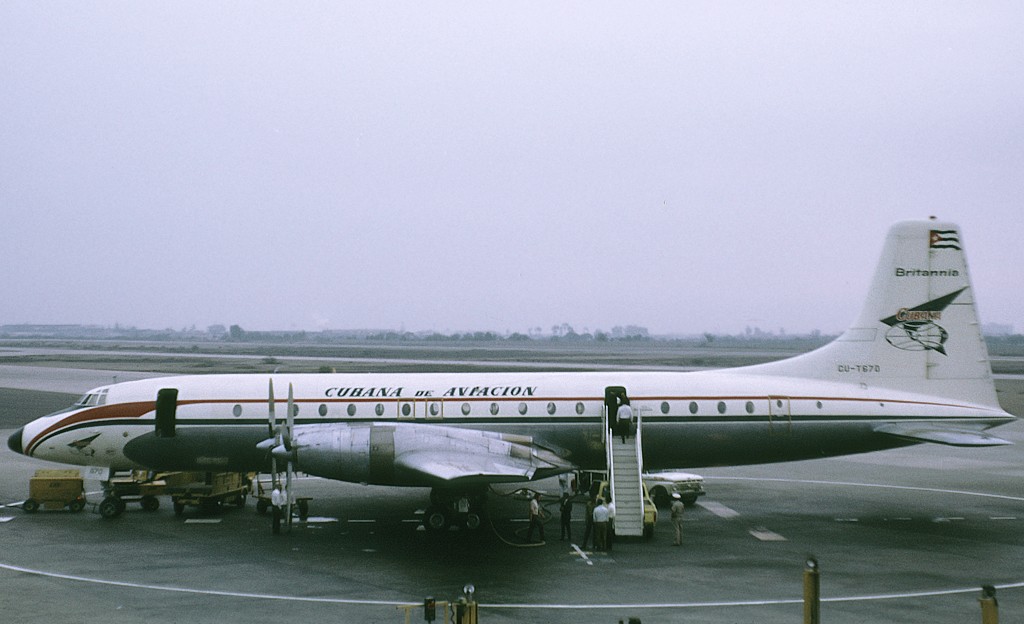 On 1 April 1958 Canadian Pacific Air Lines took delivery of the first of six Model 314 Britannias,Piggott 2005, p. 139. with an additional two Model 324s (built to a 320 standard) arriving later and sold to
On 1 April 1958 Canadian Pacific Air Lines took delivery of the first of six Model 314 Britannias,Piggott 2005, p. 139. with an additional two Model 324s (built to a 320 standard) arriving later and sold to  Following the purchase of remaining spare parts from the
Following the purchase of remaining spare parts from the

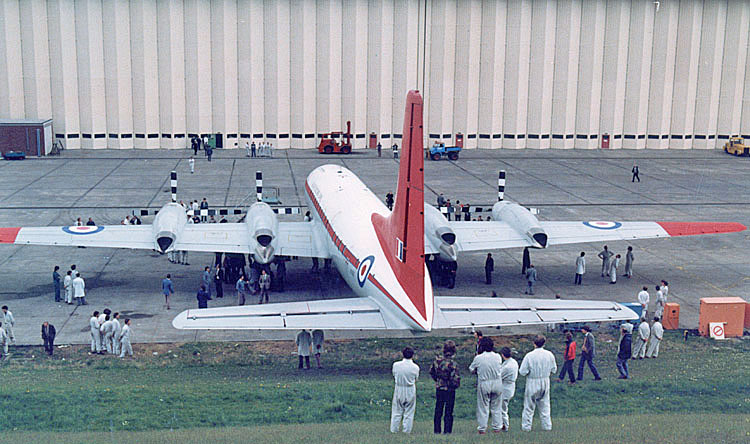
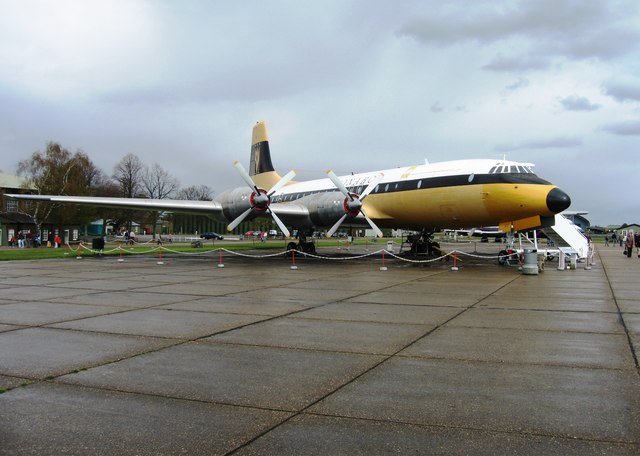


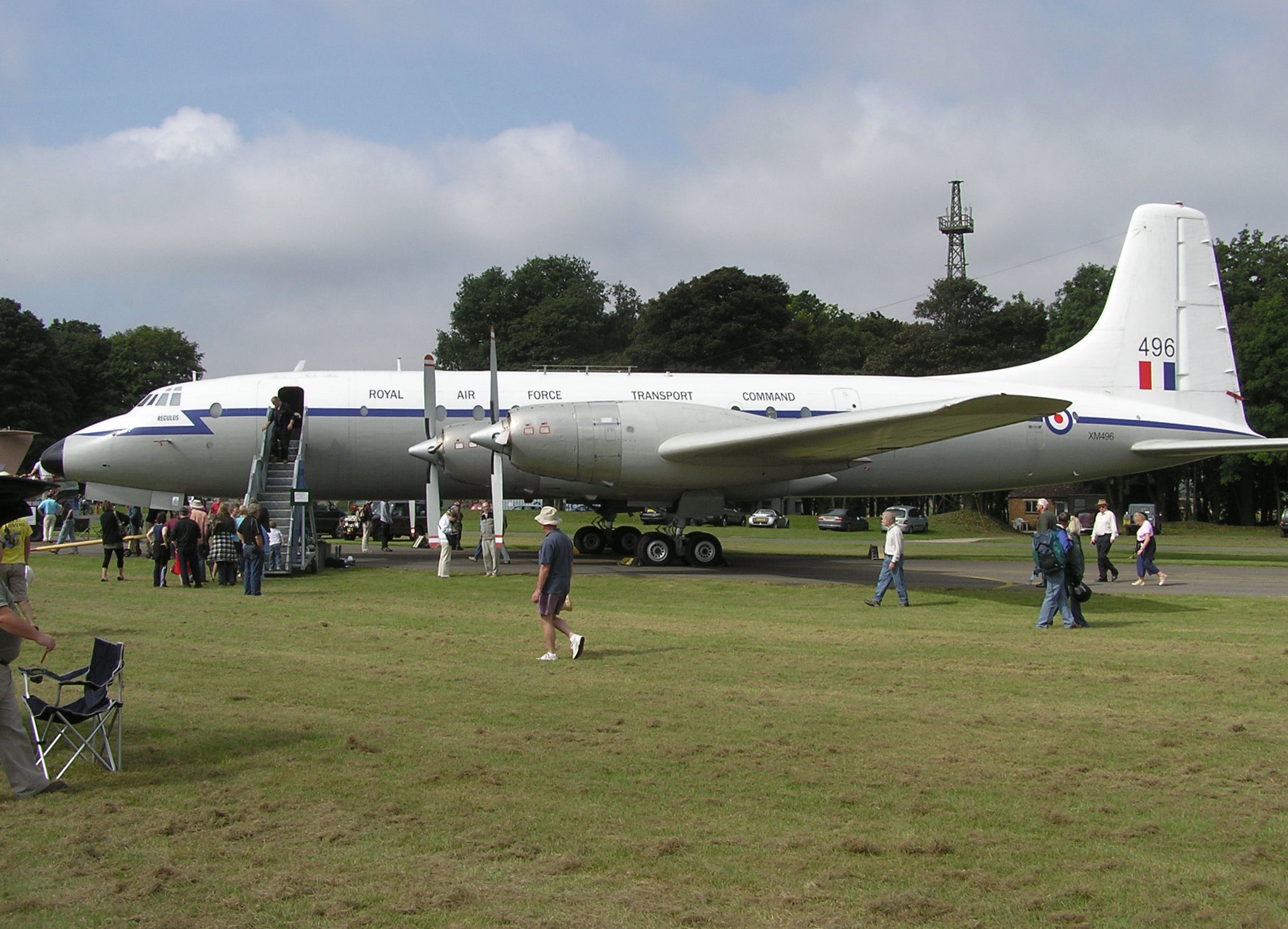
airliner
An airliner is a type of aircraft for transporting passengers and air cargo. Such aircraft are most often operated by airlines. Although the definition of an airliner can vary from country to country, an airliner is typically defined as an ...
built by the Bristol Aeroplane Company
The Bristol Aeroplane Company, originally the British and Colonial Aeroplane Company, was both one of the first and one of the most important British aviation companies, designing and manufacturing both airframes and aircraft engines. Notable a ...
in 1952 to fly across the Commonwealth
A commonwealth is a traditional English term for a political community founded for the common good. Historically, it has been synonymous with "republic". The noun "commonwealth", meaning "public welfare, general good or advantage", dates from the ...
. During development two prototypes were lost and the turboprop engines proved susceptible to inlet icing, which delayed entry into service while solutions were sought.
By the time development was completed, "pure" jet airliners from France, the United Kingdom, and the United States were about to enter service, and consequently, only 85 Britannias were built before production ended in 1960. Nevertheless, the Britannia is considered one of the landmarks in turboprop-powered airliner design and was popular with passengers. It became known as "The Whispering Giant" for its quiet exterior noise and smooth flying, although the passenger interior remained less tranquil.
Canadair
Canadair Ltd. was a civil and military aircraft manufacturer in Canada. In 1986, its assets were acquired by Bombardier Aerospace, the aviation division of Canadian transport conglomerate Bombardier Inc.
Canadair's origins lie in the establishm ...
purchased a licence to build the Britannia in Canada, adding another 72 aircraft in two variants. These were the stretched Canadair CL-44/Canadair CC-106 Yukon, and the greatly modified Canadair CP-107 Argus maritime patrol aircraft.
Design and development
Origins
In 1942, during the Second World War, Allied aircraft construction saw the UK of necessity concentrating on heavy bombers, leaving the production of transport aircraft to the USA. This would have left the UK with little experience in transport construction at the end of the war, so in 1943, a committee under Lord Brabazon of Tara investigated the future British civilian airliner market. TheBrabazon Committee
The Brabazon Committee was a committee set up by the British government in 1942 to investigate the future needs of the British Empire's civilian airliner market following World War II.Phipp, 2007, pp.15-16 The study was an attempt at defining, in ...
called for several aircraft to be developed to its specifications for Britain's civilian aviation needs.
Bristol won the Type I and Type III contracts, delivering their Type I design, the Bristol Brabazon in 1949. The requirement for the 1946 British Overseas Airways Corporation (BOAC) Medium Range Empire (MRE) Requirements coincided with the Type III, Specification C.2/47, issued in April 1947 by the Minister of Supply.Oughton 1973, p. 96. The specifications called for an airliner capable of carrying 48 passengers and powered with Bristol Centaurus
The Centaurus was the final development of the Bristol Engine Company's series of sleeve valve radial aircraft engines. The Centaurus is an 18-cylinder, two-row design that eventually delivered over . The engine was introduced into service lat ...
radial engines or Napier Nomad turbo-compound Diesel engine.Swanborough 1962, p. 26. Turboprop options were also considered, but they were so new that Bristol could not guarantee their performance.
Although in-company Proposals "X" for conversions of Lockheed Constellations to Centaurus 662 powerplants or "Y" for licence production of the Constellation were considered in late 1946, BOAC decided that an entirely new design was preferred. After wrangling between the Ministry of Supply and BOAC over costs, the go-ahead for the project assigned the company designation Model 175 in July 1948.Barnes 1964, p. 344. Three prototypes were ordered with the first being Mk 1 (Centaurus 662), and the second and third prototypes designated Mk 2 (to be convertible to Bristol Proteus
The Bristol Proteus was the Bristol Engine Company's first mass-produced gas turbine engine design, a turboprop that delivered just over 4,000 hp (3,000 kW). The Proteus was a reverse-flow gas turbine. Because the second turbine drov ...
turboprops, then under development).
In October 1947, with work already underway, Bristol had settled on a Centaurus-powered design with a gross weight of and a payload of . The anticipated Karachi- Cairo run necessitated a 48-seat limit including sufficient fuel for the lengthy stage. On 5 July 1949, the Ministry of Supply ordered five such prototypes with the understanding that BOAC would contract for 25 production units. BOAC purchased options for 25 aircraft on 28 July powered by the Bristol Centaurus, but to be re-fitted with the Bristol Proteus when available.
Redefinition and prototypes
In November 1948, the Type 175 was revised again to accommodate 74 passengers and a longer wingspan in a contemplated long-range version aimed at long-haul Empire and transatlantic routes rather than the medium-haul Empire routes originally planned.Taylor 1982, pp. 33–34. On reflection, BOAC decided that only the Proteus engine was viable, necessitating a further redesign eliminating the Centaurus option. Senior figures within BOAC such as the Deputy Chairman Whitney Straight, however, considered the Proteus engine to be "an obsolete contraption". Despite BOAC's desire to have a turboprop engine, the Type 175 project was contingent on the Proteus passing a 150-hour Type Test.Carvell 2005, p. 70. During April 1950, the airliner's name, ''Britannia'', was selected. The designation ''Britannia 101'' was applied to first pair of prototypes, which were powered by the early Proteus 625, the successor to the 600 series engine that had already completed type trials.
The first prototype, registered ''G-ALBO'', with Bristol Chief Test Pilot A.J. "Bill" Pegg at the controls, first flew on 16 August 1952 at Filton Aerodrome.Carvell 2005, p. 67. During the maiden flight, the over-sensitive flying controls led to wild pitching before Pegg restored control. During the landing approach, smoke filled the cockpit and the main undercarriage bogie temporarily stuck, only fully deploying seconds before landing. The snags were resolved and by September, the prototype was cleared to perform at the 1952 SBAC Display at
During April 1950, the airliner's name, ''Britannia'', was selected. The designation ''Britannia 101'' was applied to first pair of prototypes, which were powered by the early Proteus 625, the successor to the 600 series engine that had already completed type trials.
The first prototype, registered ''G-ALBO'', with Bristol Chief Test Pilot A.J. "Bill" Pegg at the controls, first flew on 16 August 1952 at Filton Aerodrome.Carvell 2005, p. 67. During the maiden flight, the over-sensitive flying controls led to wild pitching before Pegg restored control. During the landing approach, smoke filled the cockpit and the main undercarriage bogie temporarily stuck, only fully deploying seconds before landing. The snags were resolved and by September, the prototype was cleared to perform at the 1952 SBAC Display at Farnborough Farnborough may refer to:
Australia
* Farnborough, Queensland, a locality in the Shire of Livingstone
United Kingdom
* Farnborough, Hampshire, a town in the Rushmoor district of Hampshire, England
** Farnborough (Main) railway station, a railw ...
where spectators commented on the "quietness" of the giant airliner.Carvell 2005, p. 68. In November 1952, Popular Science
''Popular Science'' (also known as ''PopSci'') is an American digital magazine carrying popular science content, which refers to articles for the general reader on science and technology subjects. ''Popular Science'' has won over 58 awards, incl ...
reported that by 1954 BOAC would have 25 of these aircraft on routes such as London-to-Tokyo over the Arctic and North Pole.
Delays
However, in 1953 and 1954, three de Havilland Comets crashed without explanation, which led the Air Ministry to demand that the Britannia undergo lengthy tests. Further delays were attributed to teething problems with the engine resulting in the loss in February 1954 of the second prototype, ''G-ALRX'', caused by a failed reduction gear that led to an engine fire and the aircraft landing on the mudflats of the Severn Estuary. Resolving inlet icing issues (by selecting a different cruising height) that were discovered as the first aircraft were being delivered to BOAC, and which were exaggerated by BOAC, devastated future sales and delayed the Britannia's introduction by two years, also took time. The first prototype ''G-ALBO'' was modified to more closely approximate a production standard, but was retained by the company to undergo engine testing and development.Carvell 2005, p. 71. Bristol revised the design into a larger transatlantic airliner for BOAC, resulting in the Series 200 and 300; the Britannia 300LR (Long-Range) was viewed as being "eminently suitable" for BOAC's services between London and Sydney. The purchase price for each Britannia 100-series aircraft was agreed by BOAC in 1955 at £768,000.
The first prototype ''G-ALBO'' was modified to more closely approximate a production standard, but was retained by the company to undergo engine testing and development.Carvell 2005, p. 71. Bristol revised the design into a larger transatlantic airliner for BOAC, resulting in the Series 200 and 300; the Britannia 300LR (Long-Range) was viewed as being "eminently suitable" for BOAC's services between London and Sydney. The purchase price for each Britannia 100-series aircraft was agreed by BOAC in 1955 at £768,000.
Australia
Australia, officially the Commonwealth of Australia, is a Sovereign state, sovereign country comprising the mainland of the Australia (continent), Australian continent, the island of Tasmania, and numerous List of islands of Australia, sma ...
n airline Qantas considered the procurement of a Britannia fleet, however its protracted development eroded any competitive advantage against the Douglas DC-8 and de Havilland Comet 4. Route-proving trials continued through 1955, although orders were on the books from '' El Al'' and Canadian Pacific Air Lines alongside the standing order placed by BOAC.
During the first eight months of its operational trials, a total of 16 in-flight engine failures and 49 unscheduled engine changes punctuated the ongoing engine dilemma and delayed the Britannia's in-service date until February 1957, roughly two years late.Orlebar 2002, p. 27.Carvell 2005, p. 74. The Britannia received a fair amount of attention in both the popular press and the British House of Commons
The House of Commons is the lower house of the Parliament of the United Kingdom. Like the upper house, the House of Lords, it meets in the Palace of Westminster in London, England.
The House of Commons is an elected body consisting of 650 mem ...
, especially when it was revealed that BOAC had contemplated fitting Rolls-Royce Tynes to their fleet of Douglas DC-7s as an interim measure until the Britannia was cleared for service.
In 1956, Bristol's managing director Peter Masefield flew the tenth production Britannia, G-ANBJ, on a world sales tour. American interest was strong, since the Britannia seemed to be a faster, longer-range, higher-capacity sister of the Vickers Viscount, which was already a marketing success on US domestic routes, and, compared to the piston-engined DC-7C, itself a new type, the Britannia offered similar transcontinental or transatlantic range with greater speed and the public appeal of more modern powerplants. Eastern Air Lines
Eastern Air Lines, also colloquially known as Eastern, was a major United States airline from 1926 to 1991. Before its dissolution, it was headquartered at Miami International Airport in an unincorporated area of Miami-Dade County, Florida.
Ea ...
and TWA
Trans World Airlines (TWA) was a major American airline which operated from 1930 until 2001. It was formed as Transcontinental & Western Air to operate a route from New York City to Los Angeles via St. Louis, Kansas City, and other stops, with ...
both wished to place orders, which might have forced competitors to follow suit. TWA's majority owner Howard Hughes took the controls of the Britannia for one flight and immediately requested 30 aircraft. However, the Americans wanted delivery within a couple of years, and Bristol, with its limited production facilities and the prior commitment to the BOAC order, could not meet that requirement, so, with the Boeing 707
The Boeing 707 is an American, long-range, narrow-body airliner, the first jetliner developed and produced by Boeing Commercial Airplanes.
Developed from the Boeing 367-80 prototype first flown in 1954, the initial first flew on December 20, ...
and Douglas DC-8 jets expected in service by 1958-9, the opportunity passed.
Aviation historian Peter Pigott summarised the impact of the delays:
Related developments
 In 1954, a licence was issued to
In 1954, a licence was issued to Canadair
Canadair Ltd. was a civil and military aircraft manufacturer in Canada. In 1986, its assets were acquired by Bombardier Aerospace, the aviation division of Canadian transport conglomerate Bombardier Inc.
Canadair's origins lie in the establishm ...
to build the derivative Canadair CL-28/CP-107 Argus, and the Canadair CL-44/ Canadair CC-106 Yukon. Based on the Britannia, the Argus maritime patrol and anti-submarine military aircraft was optimised for endurance on long-range patrol, not speed, and used four Wright R-3350-32W Turbo-Compound engines that used less fuel at low altitude.Piggot 2005, p. 168. Unlike its Britannia forebear, the Argus was a hybrid, using the Britannia wings, tail surfaces and landing gear matched to a "purpose-built", unpressurised fuselage. It substituted North American materials and standard parts for British parts.Pickler and Milberry 1995, pp. 145–155.
The interior of the Argus was well equipped to conduct anti-submarine warfare — navigation, communication and tactical electronic equipment along with weapon loads that included bombs, torpedoes, mines and depth charges. A total of 33 Argus aircraft were built in two series (Mk 1 and Mk 2), serving the Royal Canadian Air Force (RCAF) and Canadian Forces from 1957 to 1982.
Canadair built 39 Canadair CL-44/Canadair CC-106 Yukon turboprop Rolls-Royce Tyne-powered aircraft, comprising 12 CC-106 Yukon for the RCAF and 27 CL-44D4 passenger/cargo variants for the civil market. Civilian operators typically operated the type as freighters. Four CL-44D4s were converted as CL-44Js with lengthened fuselages for service with the Icelandic "budget" airline '' Loftleiðir''. The CL-44D4s were all built with swing-tails to allow straight-in cargo loading and served with a variety of carriers, most notably Flying Tiger Line.Pickler and Milberry 1995, pp. 148–149. The similar CC-106 Yukon was used by the RCAF in a solely passenger configuration.Piggot 2005, p. 146.
A final "one-off" development was the Conroy Skymonster
The Conroy Skymonster (CL-44-0) is a 1960s United States specialized cargo aircraft based on the Canadair CL-44 freighter, with an outsize fuselage.
Design and development
The aircraft was designed by John M. Conroy as a transport aircraft t ...
, nicknamed ''Guppy'', based on a Canadair CL-44D4 N447T. The prominent modification was an enlarged fuselage, like the Mini Guppy, which was produced by Jack Conroy's previous company, Aero Spacelines. After a long operational career as a freighter, the ''Guppy'' was stored at Bournemouth Airport in 2003 and was later sold.
Operational history
 Following a long period of uneventful development flying trials and the fitting of a modified Proteus 765 series engine that greatly reduced breakdowns, a full Certificate of Airworthiness was awarded at the end of 1955. The first two Model 102s were delivered to BOAC on 30 December 1955 for crew training.Jackson 1974, p. 265. The Model 102 began scheduled service on 1 February 1957 with a BOAC flight from London to Johannesburg, flights to Sydney following in March and to Tokyo in July. By August 1957, the first 15 Model 102 aircraft had been delivered to BOAC.Barnes 1964, p. 347. The last 10 aircraft of the order were built as Series 300 aircraft for transatlantic flights.
In April 1959, a Model 102 Britannia was leased by BOAC to Ghana Airways for flights between
Following a long period of uneventful development flying trials and the fitting of a modified Proteus 765 series engine that greatly reduced breakdowns, a full Certificate of Airworthiness was awarded at the end of 1955. The first two Model 102s were delivered to BOAC on 30 December 1955 for crew training.Jackson 1974, p. 265. The Model 102 began scheduled service on 1 February 1957 with a BOAC flight from London to Johannesburg, flights to Sydney following in March and to Tokyo in July. By August 1957, the first 15 Model 102 aircraft had been delivered to BOAC.Barnes 1964, p. 347. The last 10 aircraft of the order were built as Series 300 aircraft for transatlantic flights.
In April 1959, a Model 102 Britannia was leased by BOAC to Ghana Airways for flights between Accra
Accra (; tw, Nkran; dag, Ankara; gaa, Ga or ''Gaga'') is the capital and largest city of Ghana, located on the southern coast at the Gulf of Guinea, which is part of the Atlantic Ocean. As of 2021 census, the Accra Metropolitan District, , ...
and London, and several more Britannias were purchased by the airline in the early 1960s. The Model 102 was eventually made available to other BOAC associates, including Cathay Pacific, Central Africa, East African, Nigeria and Malayan airlines.Swanborough 1962, p. 27.
 The next production series was based on the long-range, mixed passenger/freight Model 200 series that was intended for civil airline use, but ultimately Bristol offered the series to the Royal Air Force (RAF) instead. The production series of three Model 252 and 20 Model 253 aircraft were purchased by RAF Transport Command in 1959, assigned the designation ''Britannia C.2'' (first Model 252 series) and ''C.1'' (Model 253 series). Those in RAF service were allocated the names of stars, such as "Arcturus", "Sirius" and "Vega". On retirement from the RAF in 1975, many Model 200 series were subsequently used by independent civil operators for cargo operations, harkening back to their original intended role.
Although the Bristol Model 302 was built first as part of the original BOAC order, BOAC released this series to other airlines; '' Aeronaves de Mexico'' took two Model 302s, which entered service in December 1957. The 18 Bristol Britannia 312s for BOAC were delivered from September 1957 with its service introduction on the first-ever non-stop flight from London to Canada on 19 December 1957. In late December 1957, BOAC began regular Britannia flights from London to New York. Other airlines, such as Israel's '' El Al'', also operated the Britannia on transatlantic routes.
In 1959, BOAC started flying the Britannia across the Pacific to Tokyo and Hong Kong, thus extending their network round the world. The westbound routing in 1959 for these intercontinental BOAC Britannia flights between the U.K. and Asia was London-New York-San Francisco-Honolulu-Wake Island-Tokyo-Hong Kong.
The next production series was based on the long-range, mixed passenger/freight Model 200 series that was intended for civil airline use, but ultimately Bristol offered the series to the Royal Air Force (RAF) instead. The production series of three Model 252 and 20 Model 253 aircraft were purchased by RAF Transport Command in 1959, assigned the designation ''Britannia C.2'' (first Model 252 series) and ''C.1'' (Model 253 series). Those in RAF service were allocated the names of stars, such as "Arcturus", "Sirius" and "Vega". On retirement from the RAF in 1975, many Model 200 series were subsequently used by independent civil operators for cargo operations, harkening back to their original intended role.
Although the Bristol Model 302 was built first as part of the original BOAC order, BOAC released this series to other airlines; '' Aeronaves de Mexico'' took two Model 302s, which entered service in December 1957. The 18 Bristol Britannia 312s for BOAC were delivered from September 1957 with its service introduction on the first-ever non-stop flight from London to Canada on 19 December 1957. In late December 1957, BOAC began regular Britannia flights from London to New York. Other airlines, such as Israel's '' El Al'', also operated the Britannia on transatlantic routes.
In 1959, BOAC started flying the Britannia across the Pacific to Tokyo and Hong Kong, thus extending their network round the world. The westbound routing in 1959 for these intercontinental BOAC Britannia flights between the U.K. and Asia was London-New York-San Francisco-Honolulu-Wake Island-Tokyo-Hong Kong.
 On 1 April 1958 Canadian Pacific Air Lines took delivery of the first of six Model 314 Britannias,Piggott 2005, p. 139. with an additional two Model 324s (built to a 320 standard) arriving later and sold to
On 1 April 1958 Canadian Pacific Air Lines took delivery of the first of six Model 314 Britannias,Piggott 2005, p. 139. with an additional two Model 324s (built to a 320 standard) arriving later and sold to Cathay Pacific
Cathay Pacific Airways Limited (CPA), more widely known as Cathay Pacific (), is the flag carrier of Hong Kong, with its head office and main hub located at Hong Kong International Airport. The airline's operations and subsidiaries have sc ...
in 1961.Swanborough 1962, p. 29. BOAC ordered seven Model 302s, but never took delivery, instead they were taken on by airlines including ''Aeronaves de México'' and Ghana Airways.Orlebar 2002, p. 28. The main long-range series were the 310s, of which BOAC took 18 and, after deliveries began in September 1957, put them into service between London and New York City; in March 1964 BOAC owned 50 aircraft, 10 being Britannia 312s. BOAC's last scheduled Britannia flight was April 1965.
The 310 series (the Model 318) also saw transatlantic service with '' Cubana de Aviación'' starting in 1958, in spite of the Cuban Revolution the airline had a special accord with British aircraft manufacturers to maintain this model of aircraft. In 1975, multiple Cuban Britannias were used to transport hundreds of soldiers of the Cuban Revolutionary Armed Forces to Angola in Operation Carlota
The Cuban intervention in Angola (codenamed Operation Carlota) began on 5 November 1975, when Cuba sent combat troops in support of the communist-aligned People's Movement for the Liberation of Angola (MPLA) against the pro-western National Un ...
, a proxy war. ''Cubana de Aviación'' continued to fly its fleet of Britannias until March 1990.
 Following the purchase of remaining spare parts from the
Following the purchase of remaining spare parts from the Royal Aircraft Establishment
The Royal Aircraft Establishment (RAE) was a British research establishment, known by several different names during its history, that eventually came under the aegis of the Ministry of Defence (United Kingdom), UK Ministry of Defence (MoD), bef ...
and Cubana, Zaïrois airlines continued to operate several Britannias into the early 1990s on regular cargo flights from N'djili Airport to various destinations within the country.
Most aircraft were built by Bristol at Filton, but 30 were built at Belfast by Short Brothers and Harland. Due to the extended development instead of a projected production of 180 Britannias, only 80 were sold. The negative experience with the development of the Britannia caused BOAC to be more cautious towards other British-made aircraft such as the Vickers VC10. Throughout the Britannia's lifespan, the engine icing condition remained a "continual potential hazard" that flight crews ultimately learned to manage with a "high-lo" flight regime that minimized the danger, Squadron Leader David Berry who had 5,000 hours on the type characterised it as flying "Beauty and the Beast." ''Aeroplane
An airplane or aeroplane (informally plane) is a fixed-wing aircraft that is propelled forward by thrust from a jet engine, propeller, or rocket engine. Airplanes come in a variety of sizes, shapes, and wing configurations. The broad spectr ...
'' in "100 Great British Aircraft" (2008) said the Britannia counted among the "greats".
Variants
Bristol Model 175
;Mk 1 :Prototype powered by Bristol Centaurus 662, fuselage length of 114 ft (35m), span 120 ft (36.5 m), seating for 48 passengers, not built ;Mk 2 :Two prototypes powered by either Bristol Centaurus 662 or Bristol Proteus 600; with the Proteus, the fuselage length of 114 ft (35m) was fitted with a longer wingspan 140 ft (43 m) and reduced seating for 36 passengers, two prototypes planned, none built.
Series 100
Seventy-four passenger airliner with 114 ft (35m) fuselage and powered by four Bristol Proteus 705 ;101 :Prototypes, two initially powered by Proteus 625 and soon after re-engined with the Proteus 755, later the first prototype ''G-ALBO'' was used for development testing of the Bristol Orion in 1956 and the Proteus 765 in 1957.Jackson 1974, p. 268. ;102 :Production aircraft for BOAC, 25 ordered with the last 10 cancelled in favour of the 300 series, 15 built.Barnes 1962, p. 348.Taylor 1982, p. 42.
Series 200
All cargo variant with a 124 ft 3 in (38 m) fuselage, BOAC option for five was cancelled, none built.Series 250
Similar to the 200 series, but mixed passenger and freight. ;252 :Originally ordered by the Ministry of Supply for intended lease to charter operators, but delivered to the Royal Air Force, as the Britannia C2. Fitted with a heavy-duty floor in forward area of fuselage and cargo door, three built.Taylor 1982, p. 44. ;253 :Passenger/freight variant for the Royal Air Force, designated Britannia C1. Fitted with full length heavy-duty floor and provision for rearwards-facing seats, as preferred by the RAF. Capacity for 115 troops or equivalent in cargo, 20 built.Taylor 1982, pp. 44–45. Aircraft later sold on the civil market as freighters designated Series 253F.
Series 300
Passenger-only "stretched" version of the 200 series, incorporating longer fuselage, capable of carrying up to 139 (originally 99) passengers, medium-fuel capacity. ;301 :One Filton-built company prototype, used the same wing and fuel capacity of the Model 100; first flew: 31 July 1956. ;302 :Belfast-built production, 10 ordered by BOAC, but cancelled in favour of 305; seven were begun to this standard with two delivered to ''Aeronaves de Mexico''. ;305 :Five Belfast-built 302s modified for longer-range, but with limited takeoff weight due to thinner fuselage skin and lighter landing gear. Originally ordered byCapital Airlines Capital Airlines may refer to:
* Beijing Capital Airlines, an airline based in China formerly named Deer Air
* Capital Airlines (United States), a now-defunct 20th-century American airline
* Capital Airlines (Nigeria), a now-defunct airline based i ...
, which were cancelled and then for Northeast Airlines
Northeast Airlines was an American airline based in Boston, Massachusetts that chiefly operated in the northeastern United States, and later to Canada, Florida, the Bahamas, Los Angeles and other cities. It was acquired by and merged into Del ...
, which also cancelled. All modified to other variants.
;306
:One former Series 305 leased to ''El Al'' pending delivery of last Series 313. Later converted to Series 307.
;307
:Two of the ex-BOAC Northeast 305 order (one formerly the ''El AL'' Series 306) to Air Charter Limited
Air Charter was an early post-World War II private, British independentindependent from government-owned corporations airline formed in 1947. The airline conducted regular trooping flights to Cyprus as well as worldwide passenger and freight cha ...
September 1958 and March 1959, with a new designation: Model 307. Later to British United Airways.Taylor 1982, pp. 43–44.
;307F
:1960s conversion of 307 to freighter (both converted).
;308
:Two former 305s ordered by Transcontinental SA of Argentina in 104-passenger configuration.
;308F
:1960s conversion of 308 to freighter for British Eagle (both converted).
;309
:One former 305 (leased to Ghana Airways).
Series 310
As 305 series, but with strengthened fuselage skin and undercarriage. Long-range fuel capacity and was originally known as 300LR. ;311 :One prototype originally known as a 300LR.Barnes 1962, p. 350. ;312 :Production aircraft for BOAC, 18 built.Barnes 1962, p. 349. ;312F :1960s conversion of 312 to freighter (five converted). ;313 :Production aircraft for ''El Al'', four built. ;314 :Production aircraft for Canadian Pacific Air Lines, six built. ;317 :Production aircraft for Hunting-Clan Air Transport in 124 passenger trooping configuration, two built. ;318 :Production aircraft for ''Cubana de Aviación'', four built. Delivery taking place on 15 December 1958, later one leased to Cunard Eagle in 1960–1961 and this same airliner leased to CSA in 1962. ;319 :1960s conversion of 312 for Ghana Airways (one aircraft). ;320 :Variant for North American market, order forTrans World Airlines
Trans World Airlines (TWA) was a major American airline which operated from 1930 until 2001. It was formed as Transcontinental & Western Air to operate a route from New York City to Los Angeles via St. Louis, Kansas City, and other stops, with F ...
not concluded, two built were completed as Series 324s.
;324
:Two Series 320s built for Canadian Pacific Air Lines, later purchased by Cunard Eagle Airways
British Eagle International Airlines was a major British independentindependent from government-owned corporations airline that operated from 1948 until it went into liquidation in 1968. It operated scheduled and charter services on a domesti ...
in 1961.
Operators



Civilian operators
Military operators
; * Aeroplane and Armament Experimental Establishment * Royal Air Force **No. 99 Squadron RAF
Number 99 Squadron is a squadron (aviation), squadron of the Royal Air Force which operates the Boeing C-17 Globemaster III strategic/tactical transport aircraft from RAF Brize Norton.
The squadron conducts global deployments on behalf of the B ...
** No. 511 Squadron RAF
No. 511 Squadron was a Royal Air Force transport squadron, active during World War II, the Berlin Airlift and during the sixties and early seventies. It operated, during its three periods of existence, aircraft such as the C-47 Skytrain, Douglas ...
;
* Cuban Air Force
Accidents and incidents
Fourteen Britannias were lost with a total of 365 fatalities between 1954 and 1980. The worst accident was the1967 Nicosia Britannia disaster
The Nicosia Britannia disaster was the death of 126 passengers and crew on a Bristol Britannia of the Swiss airline Globe Air when it flew into the ground south of Nicosia Airport, in Cyprus.
Accident
The Britannia was operating a charter fli ...
with a loss of life totalling 126."Britannia crash Kills 126: Cyprus storm disaster." ''The Times,'' Issue 56921, 21 April 1967, p. 4, column D.
* On 4 February 1954, the second Britannia prototype was on a test flight when it crashed at Severn Beach
Severn Beach is a village on the Severn Estuary in South Gloucestershire, England. The eastern portal of the Severn Tunnel is on the outskirts of the village. The Severn footpathon the sea wallis part of the Severn Way that leads from Gloucester, ...
, Gloucestershire. No. 3 engine indicated a loss of oil pressure so the crew shut it down. The crew restarted No. 3 but a fire broke out and could not be contained. No. 4 engine was then shut down as a precaution. On approach to Filton Airport, there was concern that the uncontrolled fire would lead to a failure of the main spar so the pilot, William "Bill" Pegg, elected to make an emergency landing on the mudflats of the Severn Estuary. There were no fatalities.
* On 6 November 1957, the 300 series prototype crashed during a test flight, killing the 15 occupants.15 killed in Britannia test flight crash." ''The Times'', Issue 53992, 7 November 1957, p. 10, column E.
* On 24 December 1958, a BOAC Britannia 312 on a test flight crashed at Winkton, killing nine of the passengers and crew on board.
* On 5 July 1960, a Cuban Bristol Britannia 138 was hijacked by two co-pilots and diverted to Miami.
* On 12 October 1967, "Sirius" a Royal Air Force C1 was damaged beyond repair after over-running the runway at RAF Khormaksar, Aden.Eastwood 1990, pp. 70–76.
* On 22 July 1962, Canadian Pacific Air Lines Flight 301 a Britannia 314 was destroyed during an attempted "go-around" following a three-engined approach at Honolulu Airport
Daniel K. Inouye International Airport , also known as Honolulu International Airport, is the main airport of Oahu, Hawaii.
* On 29 February 1964, British Eagle International Airlines Flight 802 crashed into the
 *Britannia 101 (''G-ALRX'') - Forward fuselage is at
*Britannia 101 (''G-ALRX'') - Forward fuselage is at "The Duxford Aviation Society."
''Imperial War Museum Duxford''. Retrieved: 19 October 2010.
*Britannia C.1 (''XM496'') ''Regulus'' - On display at Cotswold Airport, England, in RAF colours.
*Britannia 307F (''5Y-AYR'') - Cockpit preserved in Burnham-on-Sea, Somerset, England.
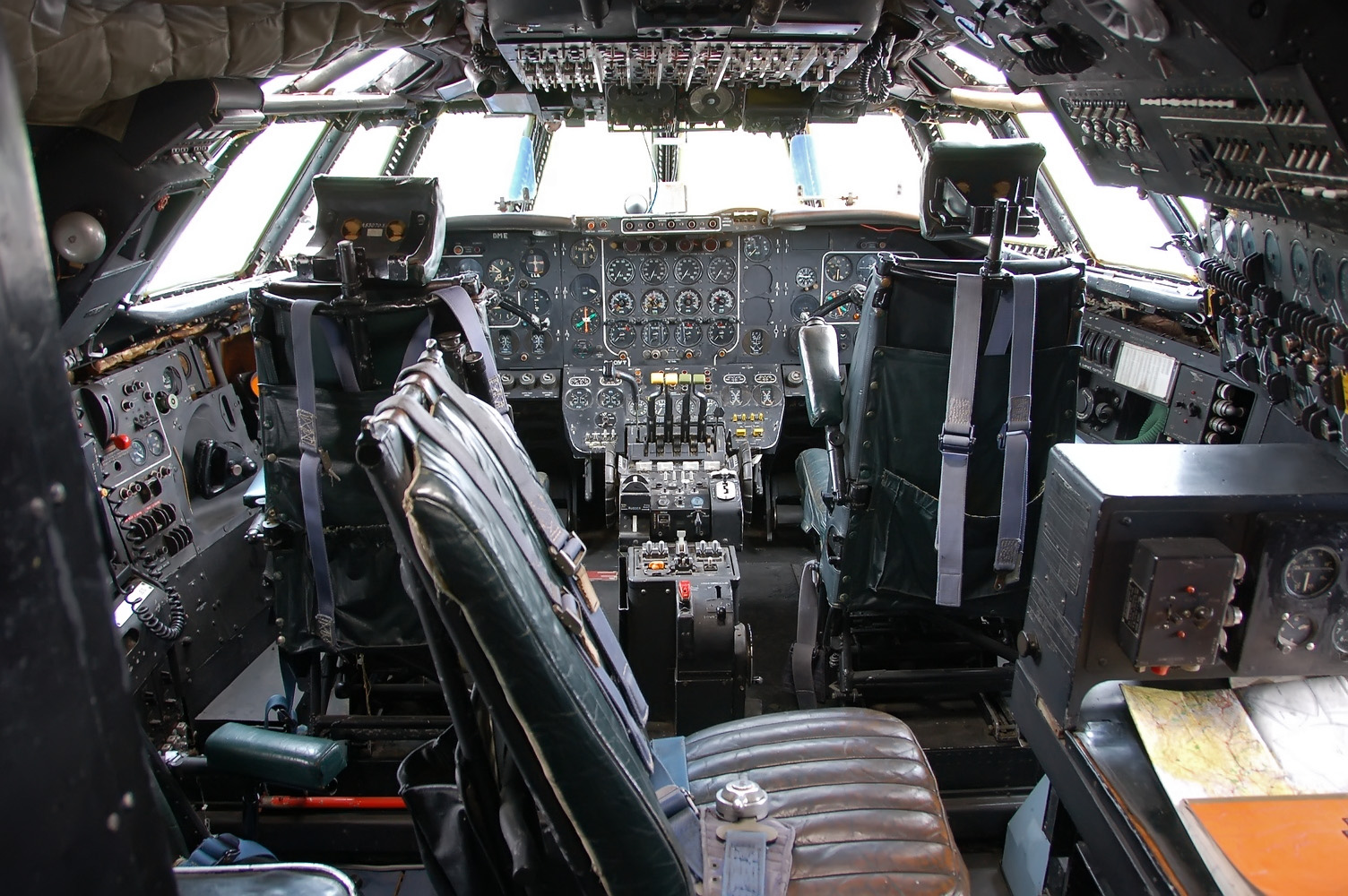
''High Corridors: Qantas, 1954–1970.''
Self-published, John Gunn, 1988. . * Gunston, Bill. ''World Encyclopedia of Aero Engines – 5th edition''. London: Sutton Publishing, 2006. . * Guttery, Ben R. ''Encyclopedia of African Airlines.'' Self-published, Ben Guttery, 1998. . * Hamilton-Paterson, James. ''Empire of the Clouds: When Britain's Aircraft Ruled the World.'' London: Faber and Faber, 2010. . * Hayward, Keith. ''The British Aircraft Industry.'' Manchester, UK: Manchester University Press, 1989. . * Jackson, A.J. ''British Civil Aircraft since 1919: Volume I.'' London: Putnam, 1974. . * Littlefield, David. ''A History of the Bristol Britannia: The Whispering Giant.'' Tiverton, UK: Halsgrove, 1992. . * Oakey, Michael, ed. ''I00 Great British Aircraft.'' ''Aeroplane'' magazine, London: IPC Media Ltd., 2008. ISSN 0143-7240. * Orlebar, Christopher. ''The Concorde Story.'' Botley, Oxford, UK: Osprey Publishing, 2002. . * Oughton, James D. ''Bristol: An Aircraft Album.'' London: Ian Allan Ltd., 1973. . * Pickler, Ron and
Bristol 175 Britannia at BAE Systems site
Britannia Aircraft Preservation Trust
Bristol Britannia XM496 Preservation Society
a 1955 ''Flight'' article by Bill Gunston {{Authority control Britannia 1950s British airliners 1950s British cargo aircraft 1950s British military transport aircraft Four-engined tractor aircraft Four-engined turboprop aircraft Low-wing aircraft Aircraft first flown in 1952
Glungezer
The Glungezer is a mountain in the Tux Alps in Tyrol (state), Tyrol southeast of Innsbruck in Austria.
History Origin of the name
The name "Glungezer" (historical spelling also ''Glunggezer'') probably goes back to an onomatopoeic imitat ...
mountain near Innsbruck
Innsbruck (; bar, Innschbruck, label=Bavarian language, Austro-Bavarian ) is the capital of Tyrol (state), Tyrol and the List of cities and towns in Austria, fifth-largest city in Austria. On the Inn (river), River Inn, at its junction with the ...
killing all 83 people aboard.
* On 1 September 1966, Britannia Airways Flight 105
Britannia Airways Flight 105 (BY 105) was an international tourist chartered flight from London Luton Airport for a flight to Ljubljana Brnik Airport (today Ljubljana Jože Pučnik Airport). Passengers were primarily British, most of them goin ...
crashed while landing at Ljubljana, Yugoslavia, resulting in a total of 98 fatalities out of 117 passengers and crew. The probable cause was the flight crew having failed to set their altimeter to QFE instead of QNH
The Q-code is a standardised collection of three-letter codes that each start with the letter "Q". It is an operating signal initially developed for commercial radiotelegraph communication and later adopted by other radio services, especially ...
, creating a error in indicated altitude.
* On 20 April 1967, a Globe Air Britannia 313 was on a flight from Bangkok to Basel with intermediate stops at Colombo, Mumbai (Bombay) and Cairo. The crew didn't fly to Cairo, but elected to fly to Nicosia instead, where a missed approach and subsequent low circuit ended in impact near the airport perimeter.
* On 30 September 1977, an Interconair Britannia 253G was on a ferry flight, on approach to Shannon Airport severe vibration was experienced at a height of 300 feet. The approach to runway 24 was abandoned and an overshoot was commenced. The aircraft continued to sink and collided with the ground short and to the right of the runway. The Britannia aircraft bounced, the right wing broke off. The aircraft then skidded and caught fire.
* On 16 February 1980, a Britannia 253F of Redcoat Air Cargo crashed at Billerica, Massachusetts, shortly after taking off from Boston. The probable cause was an accumulation of ice and snow on the airframe before takeoff and a further accumulation of ice when it was then flown into moderate to severe icing conditions. Contributing to the cause were encounters with wind shear, downdrafts, and turbulence during the climb. Of eight crew and passengers, seven died and one was seriously injured.
Survivors
Aerospace Bristol
Aerospace Bristol is an aerospace museum at Filton, to the north of Bristol, England, U.K. The project is run by the Bristol Aero Collection Trust and houses a varied collection of exhibits, including Concorde ''Alpha Foxtrot'', the final Conco ...
. This is the second prototype aircraft, damaged in the Severn Estuary crash.
*Britannia 308F (''G-ANCF'') - Removed from Kemble, and reassembled in early 2007 in Liverpool, England. Under restoration on the former airside
An airport is an aerodrome with extended facilities, mostly for commercial air transport. Airports usually consists of a landing area, which comprises an aerially accessible open space including at least one operationally active surface ...
apron behind the Crowne Plaza Liverpool John Lennon Airport Hotel
The Crowne Plaza Liverpool John Lennon Airport Hotel, formerly the Marriott Liverpool South Hotel, is an airport hotel near to Liverpool John Lennon Airport, serving the English city of Liverpool. Today a member of the Crowne Plaza chain owned by ...
, which was the original terminal building of Liverpool Speke Airport.
*Britannia 312 (''G-AOVF'') - On display at the Royal Air Force Museum Cosford, England, in RAF Air Support Command colours as ''XM497'' "''Schedar''".
*Britannia 312F (''G-AOVS'') - Derelict fuselage on the fire training dump at London Luton Airport, Luton, England, in Redcoat Air Cargo colours as ''G-AOVS'' "''Christian''". Is visible from the Wigmore Valley Park playing fields.
*Britannia 312 (''G-AOVT'') - On display at the Imperial War Museum Duxford, England, in Monarch Airlines
Monarch Airlines, also known as Monarch, was a British Air charter, charter and scheduled airline founded by Bill Hodgson and Don Peacock and financed by the Switzerland, Swiss Sergio Mantegazza family. The company later became a low-cost air ...
colours.''Imperial War Museum Duxford''. Retrieved: 19 October 2010.
Specifications (Series 310)

See also
References
Notes
Citations
Bibliography
* Angelucci, Enzo. ''World Encyclopedia of Civil Aircraft''. London: Willow Books, 1984. . * Barnes, C.H. ''Bristol Aircraft since 1910''. London: Putnam, First ed., 1964. * Berry, David. ''The RAF Britannia and Its People: 1959 to 1975.'' Startley, Chippenham, UK: Keyham Books, 1996. . * Carvell, Roger. "Database: Bristol Type 175 Britannia." ''Aeroplane,'' Volume 33, No. 8, August 2005. * Donald, David, ed. ''The Encyclopedia of World Aircraft.'' Leicester, UK: Blitz Editions, 1997. . * Eastwood, Tony and John Roach. ''Turbo Prop Airliner Production List''. West Drayton, UK: Aviation Hobby Shop, 1990. . * George, Edward. ''The Cuban Intervention in Angola, 1965–1991: From Che Guevara to Cuito Cuanavale.'' London: Routledge, 2005. . * Gunn, John''High Corridors: Qantas, 1954–1970.''
Self-published, John Gunn, 1988. . * Gunston, Bill. ''World Encyclopedia of Aero Engines – 5th edition''. London: Sutton Publishing, 2006. . * Guttery, Ben R. ''Encyclopedia of African Airlines.'' Self-published, Ben Guttery, 1998. . * Hamilton-Paterson, James. ''Empire of the Clouds: When Britain's Aircraft Ruled the World.'' London: Faber and Faber, 2010. . * Hayward, Keith. ''The British Aircraft Industry.'' Manchester, UK: Manchester University Press, 1989. . * Jackson, A.J. ''British Civil Aircraft since 1919: Volume I.'' London: Putnam, 1974. . * Littlefield, David. ''A History of the Bristol Britannia: The Whispering Giant.'' Tiverton, UK: Halsgrove, 1992. . * Oakey, Michael, ed. ''I00 Great British Aircraft.'' ''Aeroplane'' magazine, London: IPC Media Ltd., 2008. ISSN 0143-7240. * Orlebar, Christopher. ''The Concorde Story.'' Botley, Oxford, UK: Osprey Publishing, 2002. . * Oughton, James D. ''Bristol: An Aircraft Album.'' London: Ian Allan Ltd., 1973. . * Pickler, Ron and
Larry Milberry
Larry Milberry (born 1943) is a Canadian aviation author and publisher.
Milberry is a lifelong aviation enthusiast whose first book, ''Aviation in Canada'', was published by McGraw-Hill in 1979. Now an aviation classic, this book was written over ...
. ''Canadair: The First 50 Years.'' Toronto: CANAV Books, 1995. .
* Piggot, Peter. ''On Canadian Wings: A Century of Flight.'' Toronto: Dundurn Press Ltd., 2005. .
* Swanborough, F. G. ''Turbine-engined Airliners of the World.'' London: Temple Press Books, 1962.
* Taylor, H. A. "Britannia... End of the Bristol Line". ''Air Enthusiast Twenty,'' December 1982 – March 1983.
* Van Riper, A. Bowdoin. ''Imagining Flight: Aviation and Popular Culture'' (Issue 7 of Centennial of Flight Series). College Station, Texas: A&M University Press, 2004. .
* Woodley, Charles. ''Bristol Britannia'' (Crowood Aviation Series). Ramsbury, Marlborough, Wiltshire, UK: The Crowood Press, 2003. .
External links
Bristol 175 Britannia at BAE Systems site
Britannia Aircraft Preservation Trust
Bristol Britannia XM496 Preservation Society
a 1955 ''Flight'' article by Bill Gunston {{Authority control Britannia 1950s British airliners 1950s British cargo aircraft 1950s British military transport aircraft Four-engined tractor aircraft Four-engined turboprop aircraft Low-wing aircraft Aircraft first flown in 1952